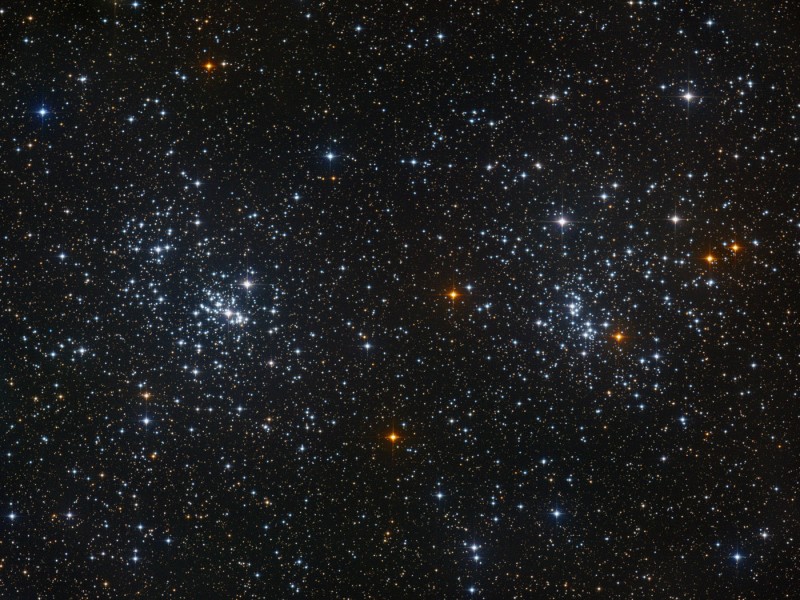
|
Credit: Volker Wendel,
Josef Popsel, Stefan Binnewies
Explanation:
Skygazers recently following
Comet Holmes
have probably also chanced across this
lovely starfield,
not far from the comet on the sky in the constellation
Perseus.
Some 7,000 light-years away, this pair of open or galactic
star clusters is an easy
binocular target and is visible to the unaided eye from
dark sky areas.
In fact, it was cataloged in 130 BC
by Greek astronomer Hipparchus.
Now known as
h and
chi Persei, or
NGC 869(left) and NGC 884, the clusters
themselves are separated by only a few hundred light-years and
contain stars much younger and hotter than the Sun.
In addition to being physically close together, the clusters' ages
based on
their individual stars are similar - evidence that
both clusters were likely a product of the same star-forming
region.
|
January February March April May June July August September October November December |
| |||||||||||||||||||||||||||||||||||||||||||||||||||||||
NASA Web Site Statements, Warnings, and Disclaimers
NASA Official: Jay Norris. Specific rights apply.
A service of: LHEA at NASA / GSFC
& Michigan Tech. U.
Based on Astronomy Picture
Of the Day
Publications with keywords: galactic cluster
Publications with words: galactic cluster
See also:
